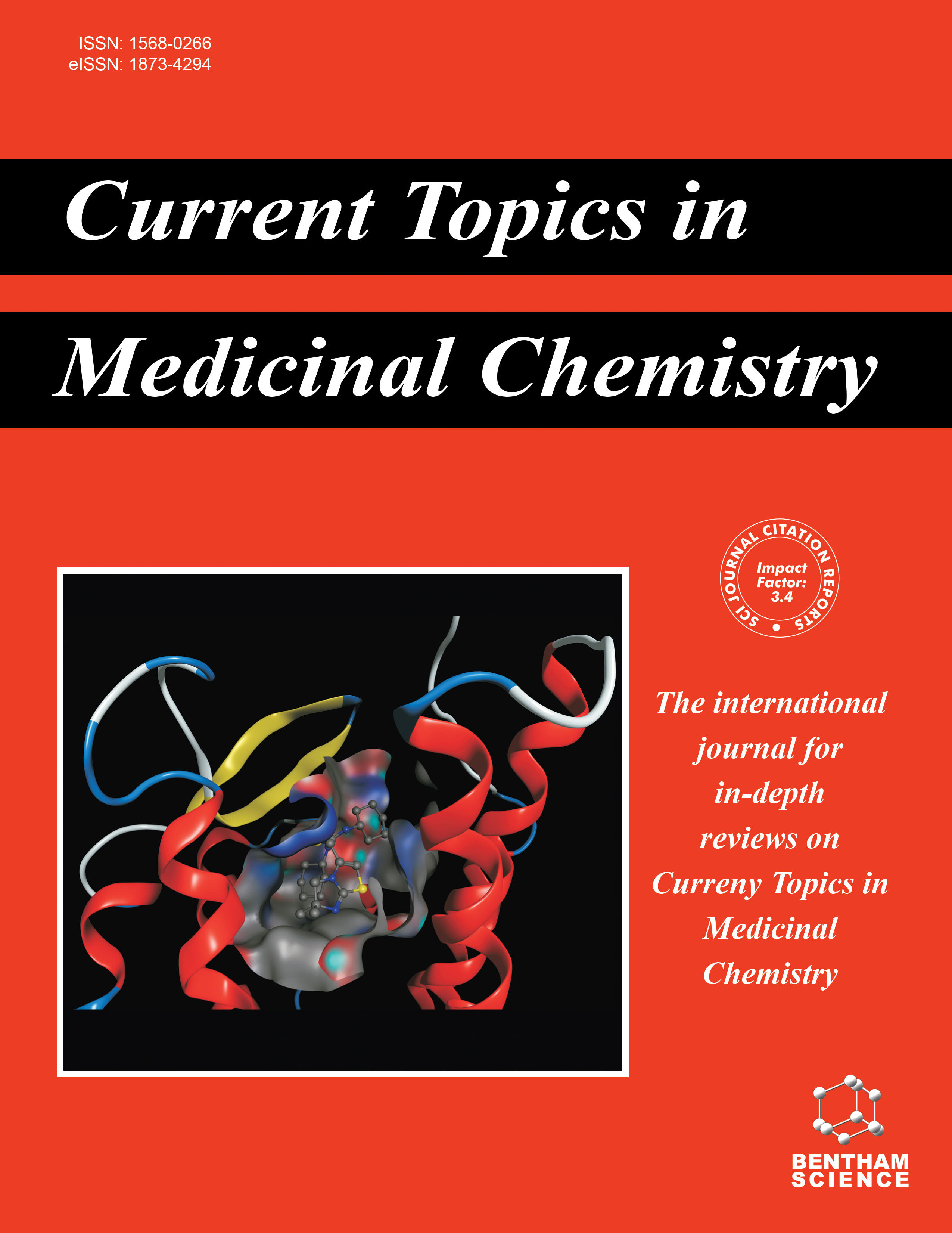- Home
- A-Z Publications
- Current Topics in Medicinal Chemistry
- Previous Issues
- Volume 18, Issue 15, 2018
Current Topics in Medicinal Chemistry - Volume 18, Issue 15, 2018
Volume 18, Issue 15, 2018
-
-
Conventional Versus Natural Alternative Treatments for Leishmaniasis: A Review
More LessLeishmaniasis is a neglected disease caused by protozoan belonging to the Leishmania genus. There are at least 16 pathogenic species for humans that are able to cause different clinical forms, such as cutaneous or visceral leishmaniasis. In spite of the different species and clinical forms, the treatment is performed with few drug options that, in most cases, are considered outdated. In addition, patients under classical treatme Read More
-
-
-
Giardiasis: Characteristics, Pathogenesis and New Insights About Treatment
More LessAuthors: V. Vivancos, I. González-Alvarez, M. Bermejo and M. Gonzalez-AlvarezGiardia intestinalis infection causes enterocytes damage and loss of brush border of the epithelial cells of the intestine that leads to shortening of microvilli and altered epithelial barrier function. This pathology results in aqueous diarrhoea, steatorrhea, nausea, abdominal pain, vomiting and weight loss. However, most infections are asymptomatic. The main consequence of Giardia colonization is nutrients malabsorption. Seve Read More
-
-
-
Treatment of Toxoplasmosis and Neosporosis in Farm Ruminants: State of Knowledge and Future Trends
More LessAuthors: Roberto Sánchez-Sánchez, Patricia Vázquez, Ignacio Ferre and Luis M. Ortega-MoraToxoplasmosis and neosporosis are closely related protozoan diseases that lead to important economic impacts in farm ruminants. Toxoplasma gondii infection mainly causes reproductive failure in small ruminants and is a widespread zoonosis, whereas Neospora caninum infection is one of the most important causes of abortion in cattle worldwide. Vaccination has been considered the most economic measure for controlling Read More
-
-
-
Natural Products for Vulvovaginal Candidiasis Treatment: Evidence from Clinical Trials
More LessAuthors: E. González-Burgos and M.P. Gómez-SerranillosBackground: Candida albicans is an opportunistic yeast that causes more than 90% of all vulvovaginal infections. Because of being inherently resistant to antifungals drugs such as azole derivatives, the search for anti-Candida albicans agents with new pharmacological targets is considered as the main therapeutic strategy to prevent and treat these types of infections. In this context, products of natural origin are a promisin Read More
-
-
-
Paracoccidioides spp. and Histoplasma capsulatum: Current and New Perspectives for Diagnosis and Treatment
More LessAuthors: C.P. Taborda, R. Buccheri, G. Benard, A.N. Duarte-Neto, J.D. Nosanchuk and L.R. TravassosThe thermally-dimorphic systemic fungal group includes several important human pathogens: Blastomyces dermatitides, Coccidioides immitis and C. posadasii, Histoplasma capsulatum, Paracoccidioides brasiliensis, P. lutzii, and Talaromyces (Penicillium) marneffei. They usually are geographically restricted and have natural habitats in soil or in plants, and when fungal propagules invade mammalian host by inhalatio Read More
-
Volumes & issues
-
Volume 25 (2025)
-
Volume 24 (2024)
-
Volume 23 (2023)
-
Volume 22 (2022)
-
Volume 21 (2021)
-
Volume 20 (2020)
-
Volume 19 (2019)
-
Volume 18 (2018)
-
Volume 17 (2017)
-
Volume 16 (2016)
-
Volume 15 (2015)
-
Volume 14 (2014)
-
Volume 13 (2013)
-
Volume 12 (2012)
-
Volume 11 (2011)
-
Volume 10 (2010)
-
Volume 9 (2009)
-
Volume 8 (2008)
-
Volume 7 (2007)
-
Volume 6 (2006)
-
Volume 5 (2005)
-
Volume 4 (2004)
-
Volume 3 (2003)
-
Volume 2 (2002)
-
Volume 1 (2001)
Most Read This Month
Article
content/journals/ctmc
Journal
10
5
false
en


